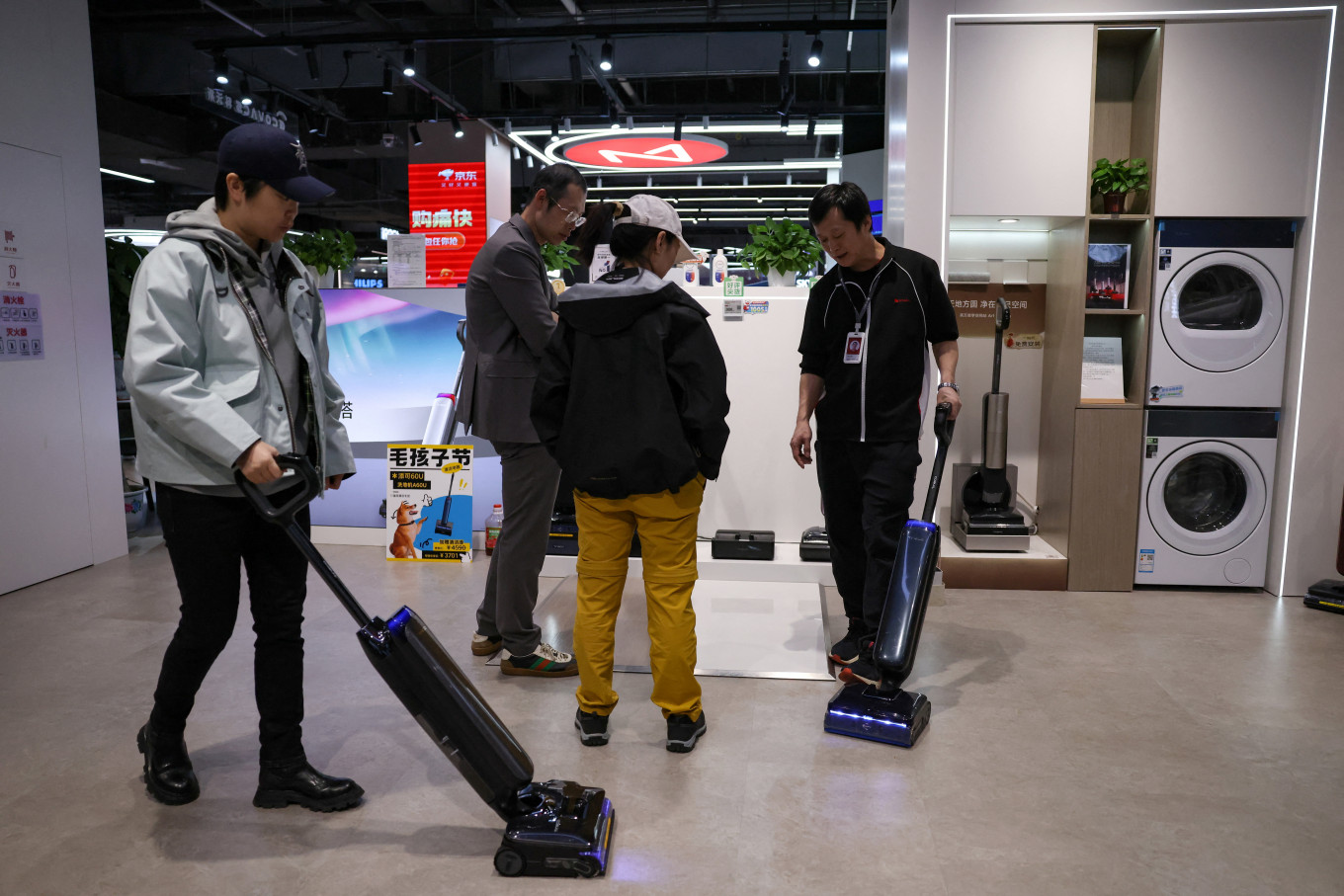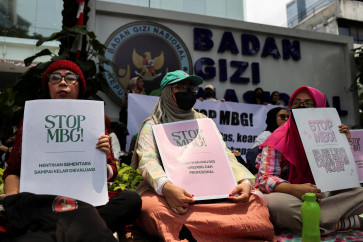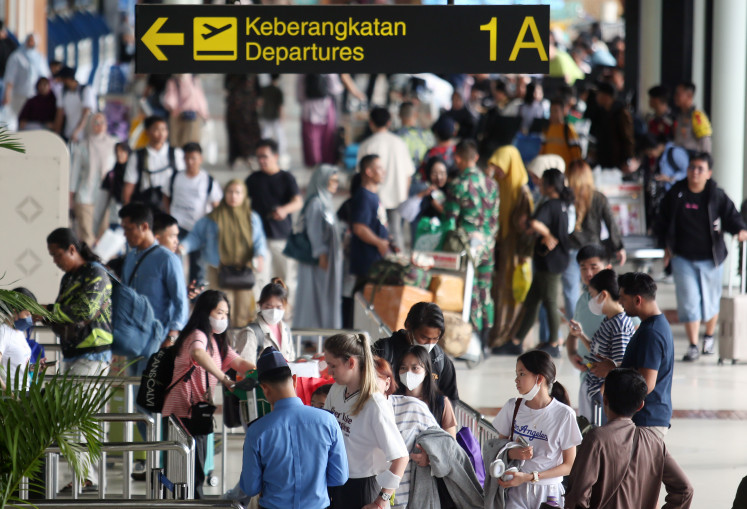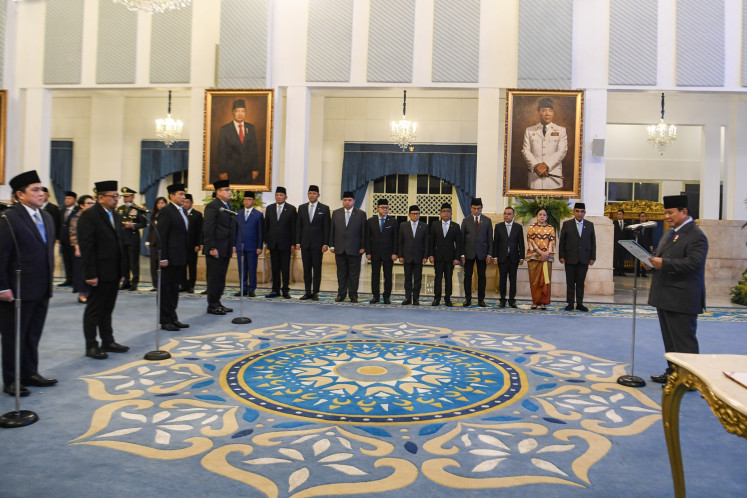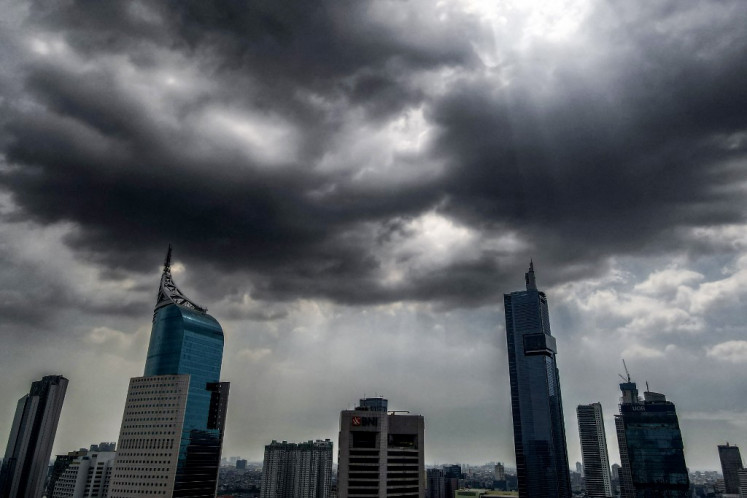Popular Reads
Top Results
Can't find what you're looking for?
View all search resultsPopular Reads
Top Results
Can't find what you're looking for?
View all search resultsChina's Q3 GDP growth slows to one-year low in test of long-term policy plans
Change text size
Gift Premium Articles
to Anyone
C
hina's economic growth slowed to the weakest pace in a year in the third quarter, as a property crisis and trade tensions hurt demand, leaving policymakers with the daunting challenge of rebalancing GDP drivers towards greater consumption over time.
Authorities have unveiled modest stimulus measures this year, supported by resilient exports and strong stock markets, but renewed US-China trade tensions pose risks. While there is room for additional support, analysts are divided over whether policymakers will act this year.
Data on Monday showed gross domestic product grew 4.8 percent in July-September, slowing from 5.2 percent in the second quarter and in line with analysts' expectations in a Reuters poll for a rise of 4.8 percent.
China is aiming for full-year growth of around 5 percent.
"The market understanding was that China is going to miss the target, no matter what. Even with stimulus, it was going to be below 5 percent," said Dan Wang, China director at Eurasia Group.
"But judging by the figure for the first three quarters, it's going to hit the target, suggesting China can withstand any pressure from the US, even with such levels of tariff threats and export restrictions. Beijing is sending the signal that it is capable of reaching its development goals and is strongly committed to its policies."
On a quarterly basis, GDP grew 1.1 percent in the third quarter, the National Bureau of Statistics data showed, compared with a forecast 0.8 percent increase and a revised 1.0 percent gain in the previous quarter.
Renewed trade tensions with Washington have highlighted the vulnerabilities of China's lopsided economy, which relies heavily on manufacturing and overseas demand. This has raised expectations that Chinese leaders may embrace painful changes to rebalance growth towards domestic consumption.
While China's export growth rebounded in September, much of the recent data show the world's second-largest economy has lost momentum, and deflationary pressures have persisted despite efforts to curb overcapacity and fierce competition among firms.
Despite resilient headline figures, exporters are already feeling the impact of higher US tariffs imposed earlier this year, forcing many to diversify into new markets.
US President Donald Trump has threatened to raise tariffs on Chinese goods by an additional 100 percent starting November 1. However, US officials have signalled that both countries were prepared to lower the temperature in their tariff spat.
China’s five-year plan in focus
Chinese leaders will hold a closed-door meeting from Monday through to Thursday to discuss, among other things, the country's 15th five-year development plan, which is expected to priorities high-tech manufacturing in the wake of the intensifying rivalry with the United States.
Investors are also looking to a Politburo meeting and the Central Economic Work Conference, expected in December, for clues on economic policy for next year.
"Q4 will be structurally different, heavy in investment and light in consumption. After all, negative investment growth is not something policymakers want to see," said Tianchen Xu, senior economist at Economist Intelligence Unit in Beijing.
"Supportive measures rolled out since September like policy finance tools and the frontloaded government bond issuance are directed towards public investment projects."
Separate September activity data, which were also released on Monday, showed industrial output grew to a three-month high of 6.5 percent year-on-year, accelerating from a 5.2 percent increase in August and beating a forecast of 5.0 percent.
Retail sales growth slowed to their weakest in 10 months at 3 percent in September, from 3.4 percent in August, matching a forecast rise of 3 percent.
Fixed asset investment shrank 0.5 percent in the first nine months compared with the same period last year, versus 0.5 percent growth in the January-to-August period and an expected 0.1 percent expansion.
Property investment in China fell 13.9 percent in the first three quarters year-on-year, after dropping 12.9 percent in the January-to-August period, official data showed on Monday.
A prolonged property crisis has weighed heavily on growth and consumer confidence in China, with momentum already pressured by the US trade spat.

